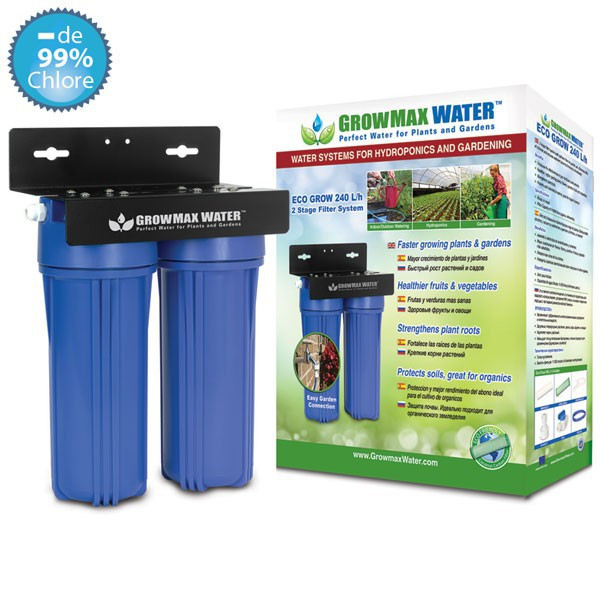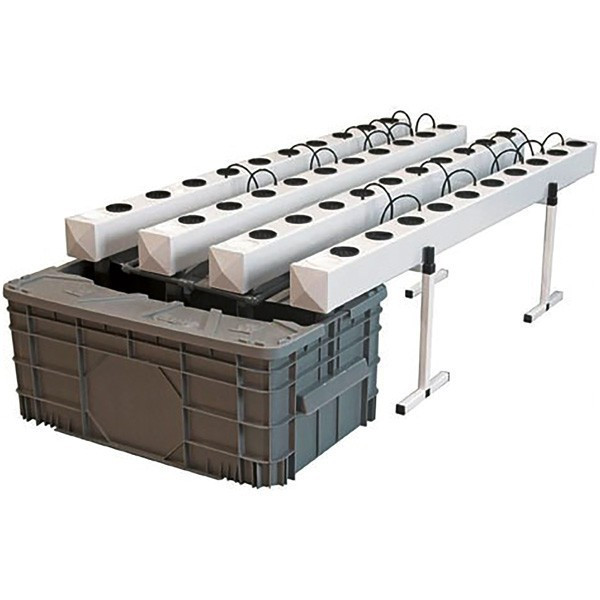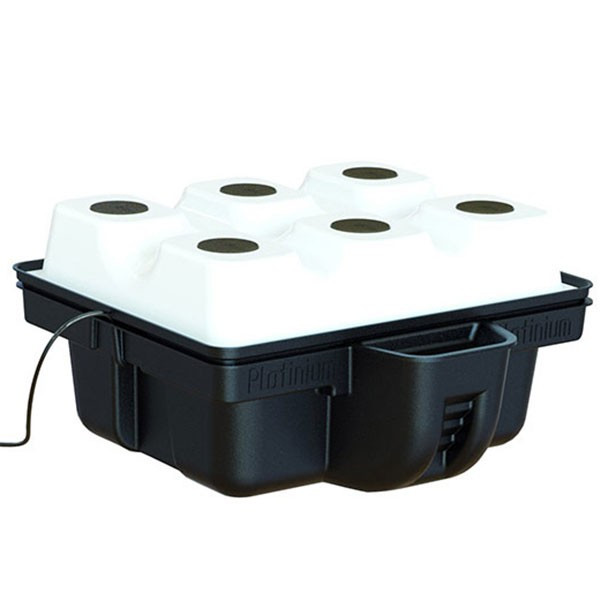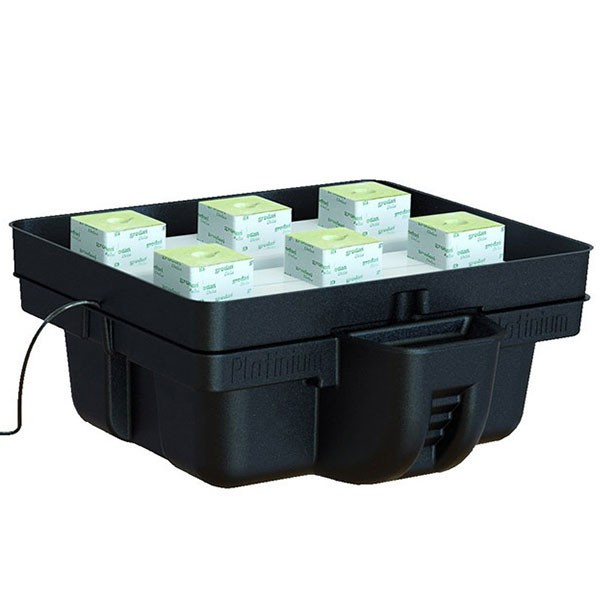Would you like to start growing your first hydroponic crop but don't know where to begin? Are you looking for a new growing method that will give you greater control over your plants? plants ? This page is designed to give you the basics ofhydroponics and the techniques you can use to grow your own plants, vegetables and vegetation.
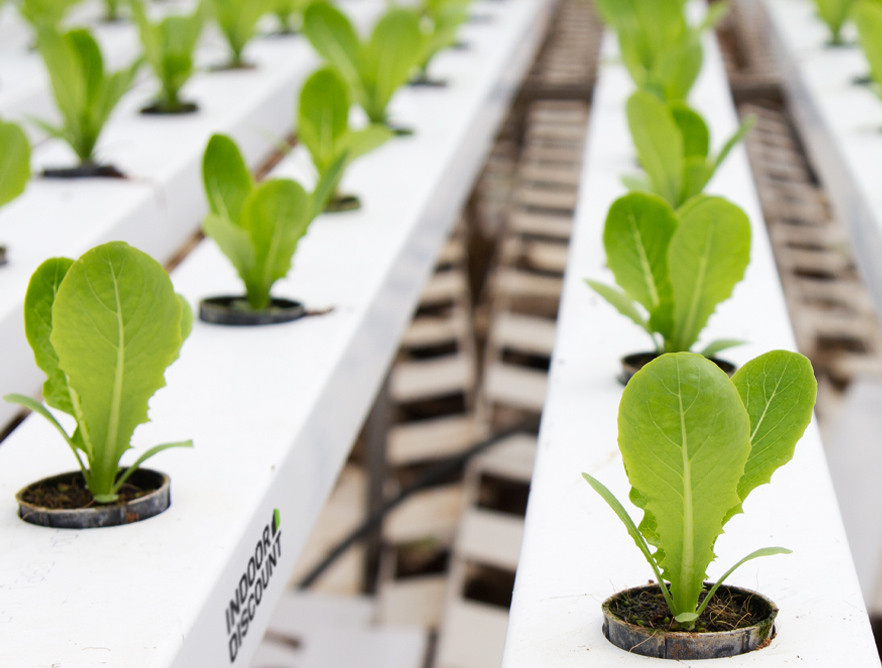
What is hydroponics ?
Simply put,hydroponics is the cultivation of terrestrial plants using nutrients, without the support of soil (as opposed to aquaponics, which involves raising aquatic species such as fish to act as nutrients for the plants). In this case, we prefer to use a neutral or inert substrate (without nutrients ) to optimize the supply of water, nutrients and, above all, oxygen to your plants. Hydroponics sometimes earns itself a bad reputation in the eyes of the general public, with people referring to it as artificial cultivation that produces tasteless tomatoes or fragrance-less roses. This bad reputation stems above all from the commercial use of this process, which favors financial return to the detriment of product quality. Fortunately, however, hydroponics has much more to offer than meets the eye, and offers a host of advantages. We could even go so far as to call it a gardening revolution! In fact, hydroponics gives you control over a vital part of the plant that is not accessible in soil-based cultivation: the root system. As a result, it's easy for growers to significantly increase their production, without forgetting taste and flavor, and even to optimize it, provided they're familiar with all the subtleties of this indoor cultivation method.
What is an open or closed hydroponic system?
An open hydroponic system is the solution most commonly used by commercial growers. Plants are grown on rockwool loaves and regularly watered with the nutrient solution (whose temperature must remain below 22°C) without being recovered. This technique has the advantage of being inexpensive to install, but generates a great deal of waste in terms of both fertilizer and water.
The alternative is the so-called closed hydroponic system, in which the nutrient solution is circulated from the reservoir to the plant before returning to the reservoir. In this way, all the water is absorbed by the plant, greatly reducing waste, not to mention the ecological benefits.
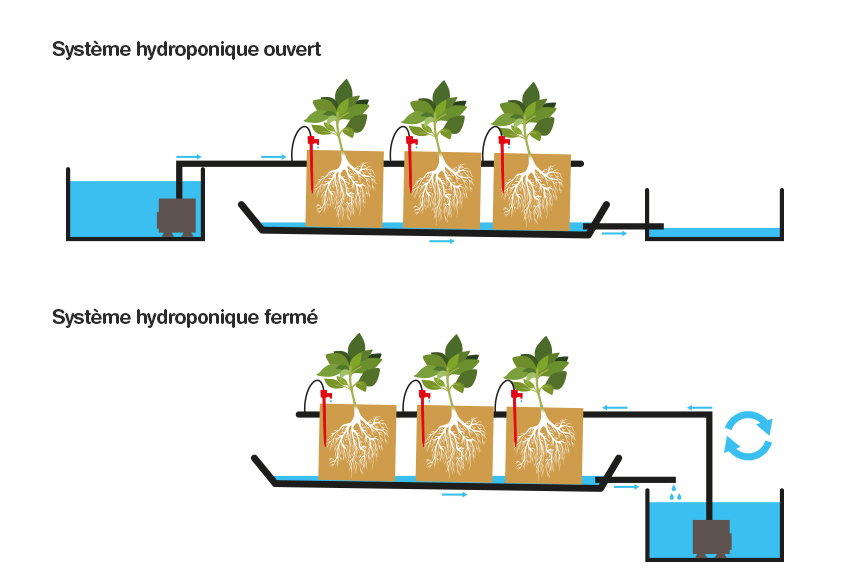
What's the difference between active and passive hydroponics?
Passive hydroponics is characterized by the absence of a water or air pump. The plant is placed in an inert substrate above a reservoir of nutrient solution. The nutrient solution is delivered to the plant by capillary action. The major disadvantage of this technique is that water stagnates in the reservoir, leading to the development of micro-organisms that can be harmful to your plants.
That's why we recommend the use of an active hydroponic system, in which water is continuously circulated between the plant and the reservoir by means of an air or water pump. The nutrient solution is then charged with oxygen, which favors nutrient uptake by the roots. This is the most efficient form of hydroponics.
Be careful, however, to ensure that your equipment is in good condition, and that power cuts can be fatal to your indoor cultivation.
How to choose your hydroponic system
Now that you've learned all you need to know about hydroponics, all you have to do is get started! But don't be too hasty: now you need to choose the growing system that suits you best. There's a system to suit every preference and budget, but we're only interested in the so-called active system.
The tidal table
This is the simplest, most popular and most efficient system. Irrigation is by alternating filling and draining. Plants are placed in rockwool cubes, themselves placed on a growing tray containing 2 to 5 cm of nutrient solution, which drains into the reservoir while a pump floods the tray. The purpose of this is to create an air current in the rockwool cubes that brings oxygen to the roots, thus promoting the plant's development and growth. Among representatives of this cultivation method, we recommend the Ebb & Flow from Platinium Hydroponics.

NFT systems
Seedlings and cuttings are placed on an absorbent mat at the bottom of a covered tray. The nutrient solution flows down the tray, bathing the roots before dripping into the reservoir. This provides a large amount of oxygen to the roots, which remain constantly irrigated. You can also choose to create your own system, thanks to the many tanks, recovery tables and NFT films available in our catalog.

Clay ball drip system
Perfect for amateur growers, this method is very simple to use. The plant grows in a pot filled with clay pebbles, which is drip-irrigated. Once drained by the medium, the solution falls back into the reservoir, and so on. We offer this kind of cultivation system for individual plants with the Pousspouss Hydro from CIS or the GHE Waterfarm, perfect for mother plants. But there are also systems that combine several pots in a single reservoir, such as the Wilma from nutriculture or the IWS range.

Aeroponics
Here, there's no need for mineral substrates (such as coconut fibre or similar), as the roots are suspended and regularly sprayed by the nutrient solution. This is the method offering maximum absorption for your plants. However, you need to be very careful about the pH and EC of your nutrient, as there will be no substrate to buffer any imbalance. Available systems include Aerotop from Platinium Hydroponics or GHE 's Aeroflo for maximum yield. As for the AeroGarden system, it's a great way to get to grips with the challenges of aeroponic cultivation.

We also recommend the use of an osmosis system such as those offered by GrowMax Water.
Now that you've got the basics down, all you have to do is get started!

